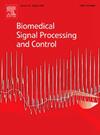Detection, localization, segmentation, and classification in colorectal cancer screening using deep learning: A systematic review
IF 4.9
2区 医学
Q1 ENGINEERING, BIOMEDICAL
引用次数: 0
Abstract
Colorectal polyps can develop into colorectal cancer (CRC), one of the leading causes of cancer-related deaths. These polyps must be found and treated as soon as possible to avoid developing CRC. Artificial intelligence (AI), especially deep learning (DL), has markedly improved the early diagnosis and treatment of CRC by increasing the accuracy and efficiency of polyp identification and classification. However, the rapid growth of research in this area has created a fragmented environment, highlighting the need for a comprehensive synthesis of findings to guide future advancements. This review aims to address this gap by systematically analyzing the state-of-the-art DL methodologies applied to colorectal polyp analysis. Adhering to the Preferred Reporting Items for Systematic Reviews and Meta-Analysis (PRISMA) guidelines, we conducted a structured search of major databases, identifying and analyzing 160 papers published between 2017 and 2024. The review focuses on the architectures of DL models, publicly available datasets, and performance metrics. The authors have analysed a wide range of DL architectures, including Convolutional Neural Networks (CNNs), YOLO-based object detectors, transformer models, recurrent neural networks (RNNs), autoencoders, and hybrid systems. Notably, YOLOv4 and CA-ResNet50 displayed state-of-the-art detection performance with accuracy rates exceeding 99 % on benchmark datasets such as LC25000 and Kvasir-SEG. For segmentation tasks, transformer-enhanced models like ViT and SwinE-Net earned excellent Dice scores (>0.92), beating standard UNet variations. However, the research also reveals persisting problems, such as dataset variability, low generalizability across diverse populations, and the absence of standardized benchmarking techniques. In addition, we critically investigate the significance of data augmentation strategies in reducing dataset limits and overfitting, and also analyze how dataset characteristics affect model performance. Finally, structured future recommendations have been provided across three critical dimensions: (1) designing comprehensive and diverse datasets to improve generalizability, (2) establishing standardized and task-specific data augmentation pipelines, and (3) developing hybrid and modular architectures optimized for specific diagnostic subtasks. This thorough analysis aims to clarify the present status of research and highlight possibilities for enhancement in this vital healthcare sector.
使用深度学习在结直肠癌筛查中的检测、定位、分割和分类:系统综述
结直肠息肉可发展为结直肠癌(CRC),是癌症相关死亡的主要原因之一。这些息肉必须尽快发现并治疗,以避免发展为结直肠癌。人工智能(AI),特别是深度学习(DL),通过提高息肉识别和分类的准确性和效率,显著改善了CRC的早期诊断和治疗。然而,这一领域研究的快速增长创造了一个碎片化的环境,突出表明需要对研究结果进行全面综合,以指导未来的进展。本综述旨在通过系统分析应用于结直肠息肉分析的最先进的DL方法来解决这一差距。根据系统评价和元分析的首选报告项目(PRISMA)指南,我们对主要数据库进行了结构化搜索,确定并分析了2017年至2024年间发表的160篇论文。这篇综述的重点是深度学习模型的架构、公开可用的数据集和性能指标。作者分析了广泛的深度学习架构,包括卷积神经网络(cnn)、基于yolo的对象检测器、变压器模型、循环神经网络(rnn)、自动编码器和混合系统。值得注意的是,YOLOv4和CA-ResNet50在LC25000和Kvasir-SEG等基准数据集上显示了最先进的检测性能,准确率超过99%。对于分割任务,像ViT和SwinE-Net这样的变压器增强模型获得了优秀的Dice分数(>0.92),击败了标准的UNet变体。然而,该研究也揭示了一些持续存在的问题,如数据集可变性,不同人群的低通用性,以及缺乏标准化的基准技术。此外,我们批判性地研究了数据增强策略在减少数据集限制和过拟合方面的重要性,并分析了数据集特征如何影响模型性能。最后,在三个关键维度上提供了结构化的未来建议:(1)设计全面和多样化的数据集以提高通用性;(2)建立标准化和特定任务的数据增强管道;(3)开发针对特定诊断子任务优化的混合和模块化架构。这一彻底的分析旨在澄清研究的现状,并强调在这一重要的医疗保健部门加强的可能性。
本文章由计算机程序翻译,如有差异,请以英文原文为准。
求助全文
约1分钟内获得全文
求助全文
来源期刊

Biomedical Signal Processing and Control
工程技术-工程:生物医学
CiteScore
9.80
自引率
13.70%
发文量
822
审稿时长
4 months
期刊介绍:
Biomedical Signal Processing and Control aims to provide a cross-disciplinary international forum for the interchange of information on research in the measurement and analysis of signals and images in clinical medicine and the biological sciences. Emphasis is placed on contributions dealing with the practical, applications-led research on the use of methods and devices in clinical diagnosis, patient monitoring and management.
Biomedical Signal Processing and Control reflects the main areas in which these methods are being used and developed at the interface of both engineering and clinical science. The scope of the journal is defined to include relevant review papers, technical notes, short communications and letters. Tutorial papers and special issues will also be published.
 求助内容:
求助内容: 应助结果提醒方式:
应助结果提醒方式:


